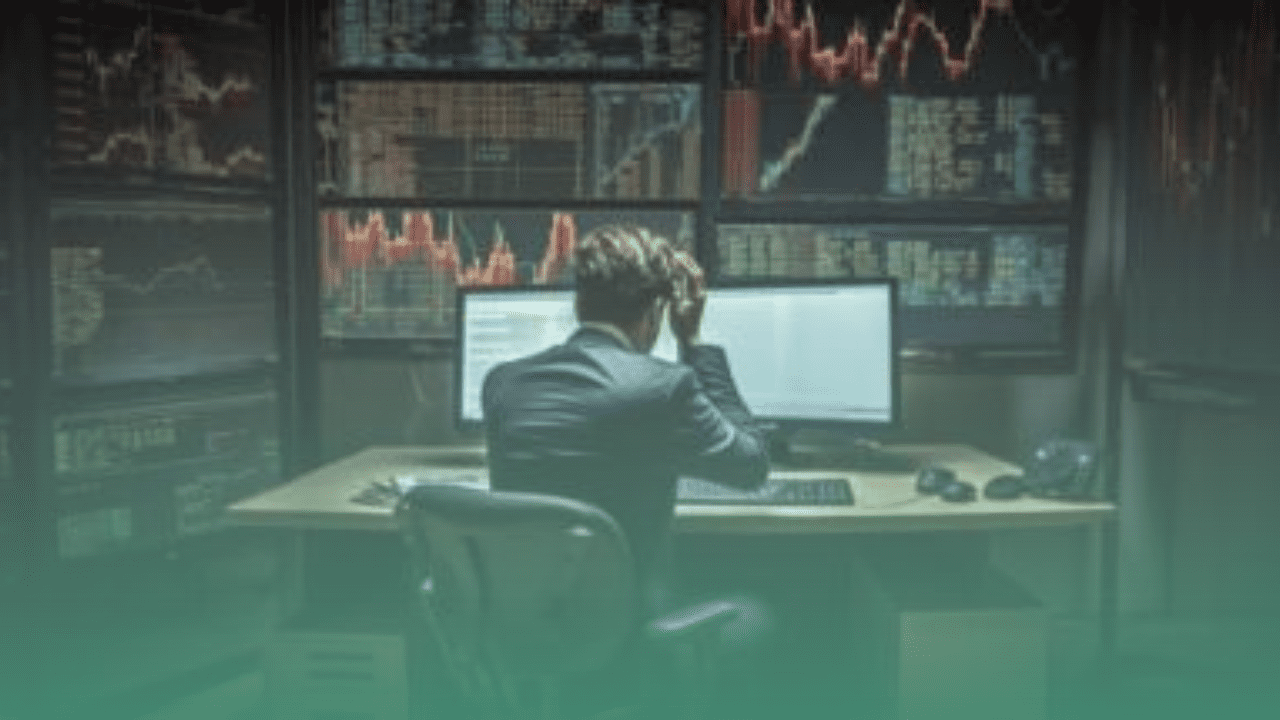Introduction
Risk management is the bedrock of successful algorithmic trading. In the fast-paced world of financial markets, where milliseconds can make or break a trade, understanding and effectively mitigating risks is paramount. Algorithmic trading, driven by complex computer algorithms, offers unparalleled speed and efficiency, but it also brings with it a unique set of challenges.
In this comprehensive guide, we will explore the world of algorithmic trading and delve deep into the critical aspect of risk management in algorithmic trading. From understanding the fundamentals of algorithmic trading to identifying its inherent risks and crafting effective strategies for risk mitigation, this article will equip traders and investors with the knowledge and tools they need to thrive in this dynamic landscape.
Understanding Algorithmic Trading
Algorithmic trading, often referred to as algo trading, is a sophisticated approach to participating in financial markets. It involves the use of computer algorithms to automate the process of buying and selling financial assets such as stocks, bonds, commodities, and currencies. This method has gained immense popularity in recent years, transforming the landscape of trading and investment.
At its core, algorithmic trading relies on predefined sets of rules and instructions that computers follow to execute trades. These rules are based on various factors, including market data, price movements, technical indicators, and statistical models. Unlike human traders, algorithms can process vast amounts of data at incredible speeds and make split-second decisions.
One of the defining features of algorithmic trading is its speed. Algorithms can execute orders in milliseconds, taking advantage of even the tiniest market price differentials. This high-speed trading has led to a substantial increase in the overall trading volume in financial markets.
The Advantages of Algorithmic Trading
Algorithmic trading, also known as algo trading, offers a plethora of advantages that have made it increasingly popular in the world of finance. These advantages are rooted in the ability of algorithms to automate and optimize trading strategies. Here are some key benefits:
- Speed and Efficiency: Algorithmic trading is exceptionally fast. Algorithms can execute orders in a matter of milliseconds, far quicker than human traders. This speed is crucial, especially in markets where prices can change rapidly. As a result, algorithmic traders can take advantage of price discrepancies and execute trades at optimal prices.
- Reduced Human Error: Emotions and human biases can often lead to costly trading mistakes. Algorithmic trading eliminates these human factors, ensuring that trades are executed precisely according to predefined criteria. This reduction in human error can lead to more consistent and profitable trading.
- Scalability: Algorithmic trading strategies can be scaled up or down easily. Whether you’re trading a small portfolio or managing vast sums of capital, algorithms can adapt to handle different trade volumes without compromising efficiency. This scalability allows institutional and individual traders alike to benefit from algorithmic strategies.
- Diversified Strategies: Algorithmic trading allows traders to implement a wide range of trading strategies simultaneously. This diversification can help spread risk and enhance returns. For example, an algorithmic trader can execute trend-following strategies, arbitrage opportunities, and market-making activities all at once.
- Access to Various Markets and Asset Classes: Algorithms can be designed to trade across multiple markets and asset classes, from stocks and bonds to commodities and currencies. This versatility provides traders with more opportunities and the ability to diversify their portfolios.
- Risk Management Opportunities: Algorithmic trading enables advanced risk management. Traders can set predefined risk limits and stop-loss orders, ensuring that losses are limited in case of adverse market movements. These risk management tools add an extra layer of protection to trading strategies.
- Data-Driven Decision Making: Algorithms are highly data-driven. They analyze vast amounts of historical and real-time market data to make informed decisions. This data-driven approach can lead to more accurate predictions and better trading outcomes.
- 24/7 Trading: Algorithms can operate around the clock, allowing traders to take advantage of opportunities in global markets, even when they are asleep or away from their trading desks. This 24/7 trading capability is especially valuable in the cryptocurrency and forex markets, which never close.
The Risks of Algorithmic Trading
While algorithmic trading offers numerous advantages, it’s not without its share of risks and challenges. These risks stem from the complexity and speed of algorithmic systems and the dynamic nature of financial markets. It’s crucial for traders and investors to be aware of these potential pitfalls. Here are some of the key risks associated with algorithmic trading:
- Technical Failures: The reliance on complex software and technology makes algorithmic trading vulnerable to technical failures. Software glitches, bugs, and hardware malfunctions can disrupt trading activities and lead to unexpected losses. It’s essential to have robust fail-safe mechanisms in place to minimize the impact of technical failures.
- Network Latency: In a world where milliseconds can make a significant difference in trading outcomes, network latency can be a critical issue. Delays in data transmission between a trader’s algorithm and the exchange can result in missed opportunities or suboptimal trade executions.
- Data Inaccuracies: Algorithmic trading relies heavily on accurate and up-to-date market data. Any discrepancies or inaccuracies in the data feed can lead to erroneous trading decisions. Traders must have reliable data sources and data validation processes to mitigate this risk.
- Market Volatility: While algorithms are designed to handle various market conditions, unexpected and extreme market volatility can pose challenges. Flash crashes or sudden price spikes can trigger stop-loss orders or cause algorithms to behave erratically.
- Over-Optimization: Over-optimization occurs when algorithms are fine-tuned to perform exceptionally well with historical data but struggle to adapt to real-time market conditions. This phenomenon, known as “curve-fitting,” can lead to poor performance and losses in live markets.
- Regulatory Risks: Algorithmic trading is subject to regulatory oversight in many jurisdictions. Changes in regulations or compliance requirements can impact trading strategies and operations. Traders must stay informed about regulatory developments and ensure compliance with applicable rules.
- Liquidity Risk: Some algorithmic trading strategies, such as market making, rely on providing liquidity to the market. During periods of market stress or illiquidity, it can be challenging to exit positions without significant losses.
Effective Risk Management in Algorithmic Trading
Effective risk management is paramount to protect capital and ensure the long-term success of trading strategies. While algorithmic trading offers many advantages, it also comes with inherent risks. Here are some effective risk management in algorithmic trading strategies to navigate these challenges.
Diversification
Diversifying trading strategies and assets is a fundamental risk management in algorithmic trading strategy. Avoid putting all your capital into a single algorithm or asset class. By spreading your investments across various strategies and instruments, you can reduce the impact of losses in one area with gains in another.
Risk Limits
Establish strict risk limits for each algorithm and the overall portfolio. Define the maximum acceptable loss for each trade and the cumulative loss for the entire portfolio. Adhering to these limits helps prevent catastrophic losses and keeps trading within predefined boundaries.
Real-Time Monitoring
Constantly monitor your algorithms in real time. Implement automated alerts and notifications to flag any abnormal behavior or deviations from the trading strategy. Quick identification of issues allows for timely intervention and risk mitigation.
Stress Testing
Regularly conduct stress tests to evaluate how your algorithms perform under extreme market conditions. These tests simulate adverse scenarios, helping you identify weaknesses and vulnerabilities in your strategies. Adjust and fine-tune algorithms accordingly to enhance their robustness.
Position Sizing
Determine the appropriate position size for each trade based on your risk tolerance and the specific algorithm’s characteristics. Avoid overleveraging, which can magnify losses. Position sizing ensures that you allocate capital prudently and protect your portfolio.
Stop-Loss Orders
Implement stop-loss orders to automatically exit trades when predefined loss thresholds are reached. This prevents emotional decision-making and ensures that losses are limited to acceptable levels.
In Conclusion
In the realm of algorithmic trading, where opportunities and challenges coexist in equal measure, effective risk management in algorithmic trading is the compass that guides traders to success. Throughout this exploration of risk management in algorithmic trading, we’ve illuminated the critical role it plays in navigating the intricate world of automated trading strategies.
Algorithmic trading, with its lightning-fast executions and data-driven decision-making, offers the promise of efficiency and profitability. However, it’s essential to remember that no strategy is without risks. Technical failures, market volatility, and model uncertainties are just a few of the potential stumbling blocks.
Yet, armed with the knowledge and strategies outlined in this guide, traders and investors can approach algorithmic trading with confidence. Diversification spreads risk, risk limits protect capital, real-time monitoring ensures quick responses, and stress testing fortifies algorithms against adverse conditions.
As the financial markets continue to evolve, so must our trading strategies and risk management in algorithmic trading practices. Stay vigilant, adapt to change, and embrace the ever-evolving landscape of algorithmic trading. By doing so, you not only safeguard your investments but also position yourself for success in the exciting and dynamic world of algorithmic trading.




